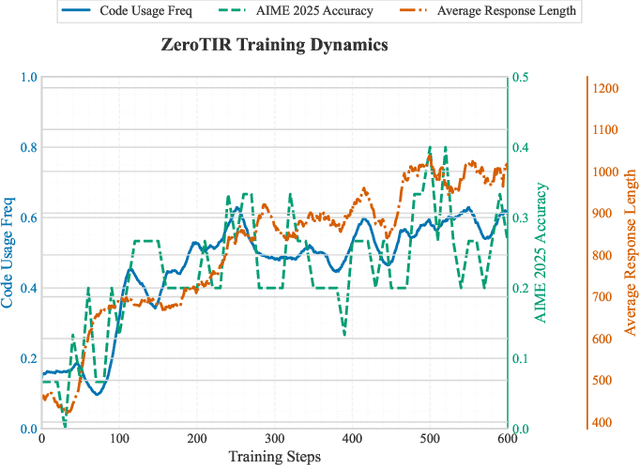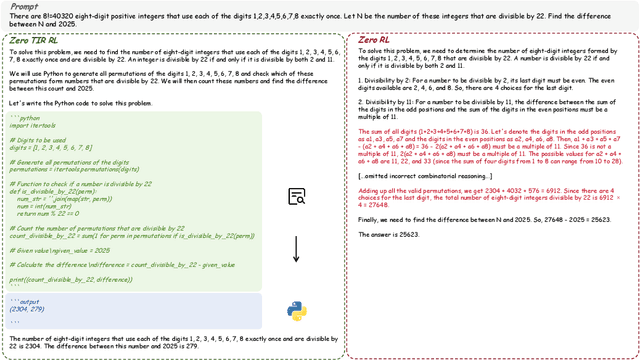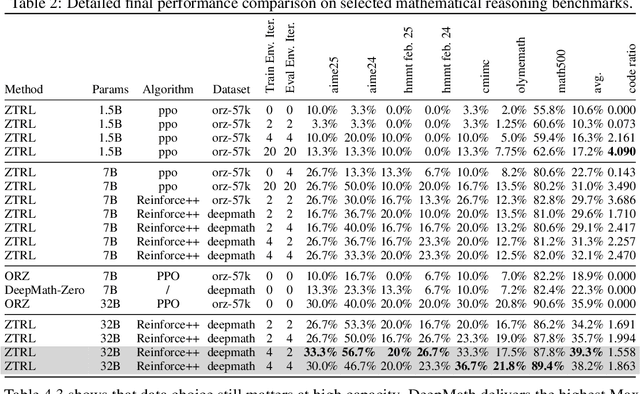Wenqiang Zhang
Fudan university
Collaborative Reconstruction and Repair for Multi-class Industrial Anomaly Detection
Dec 12, 2025Abstract:Industrial anomaly detection is a challenging open-set task that aims to identify unknown anomalous patterns deviating from normal data distribution. To avoid the significant memory consumption and limited generalizability brought by building separate models per class, we focus on developing a unified framework for multi-class anomaly detection. However, under this challenging setting, conventional reconstruction-based networks often suffer from an identity mapping problem, where they directly replicate input features regardless of whether they are normal or anomalous, resulting in detection failures. To address this issue, this study proposes a novel framework termed Collaborative Reconstruction and Repair (CRR), which transforms the reconstruction to repairation. First, we optimize the decoder to reconstruct normal samples while repairing synthesized anomalies. Consequently, it generates distinct representations for anomalous regions and similar representations for normal areas compared to the encoder's output. Second, we implement feature-level random masking to ensure that the representations from decoder contain sufficient local information. Finally, to minimize detection errors arising from the discrepancies between feature representations from the encoder and decoder, we train a segmentation network supervised by synthetic anomaly masks, thereby enhancing localization performance. Extensive experiments on industrial datasets that CRR effectively mitigates the identity mapping issue and achieves state-of-the-art performance in multi-class industrial anomaly detection.
Virtual Width Networks
Nov 17, 2025Abstract:We introduce Virtual Width Networks (VWN), a framework that delivers the benefits of wider representations without incurring the quadratic cost of increasing the hidden size. VWN decouples representational width from backbone width, expanding the embedding space while keeping backbone compute nearly constant. In our large-scale experiment, an 8-times expansion accelerates optimization by over 2 times for next-token and 3 times for next-2-token prediction. The advantage amplifies over training as both the loss gap grows and the convergence-speedup ratio increases, showing that VWN is not only token-efficient but also increasingly effective with scale. Moreover, we identify an approximately log-linear scaling relation between virtual width and loss reduction, offering an initial empirical basis and motivation for exploring virtual-width scaling as a new dimension of large-model efficiency.
Commonality in Few: Few-Shot Multimodal Anomaly Detection via Hypergraph-Enhanced Memory
Nov 16, 2025Abstract:Few-shot multimodal industrial anomaly detection is a critical yet underexplored task, offering the ability to quickly adapt to complex industrial scenarios. In few-shot settings, insufficient training samples often fail to cover the diverse patterns present in test samples. This challenge can be mitigated by extracting structural commonality from a small number of training samples. In this paper, we propose a novel few-shot unsupervised multimodal industrial anomaly detection method based on structural commonality, CIF (Commonality In Few). To extract intra-class structural information, we employ hypergraphs, which are capable of modeling higher-order correlations, to capture the structural commonality within training samples, and use a memory bank to store this intra-class structural prior. Firstly, we design a semantic-aware hypergraph construction module tailored for single-semantic industrial images, from which we extract common structures to guide the construction of the memory bank. Secondly, we use a training-free hypergraph message passing module to update the visual features of test samples, reducing the distribution gap between test features and features in the memory bank. We further propose a hyperedge-guided memory search module, which utilizes structural information to assist the memory search process and reduce the false positive rate. Experimental results on the MVTec 3D-AD dataset and the Eyecandies dataset show that our method outperforms the state-of-the-art (SOTA) methods in few-shot settings. Code is available at https://github.com/Sunny5250/CIF.
Seeing is Believing: Rich-Context Hallucination Detection for MLLMs via Backward Visual Grounding
Nov 15, 2025Abstract:Multimodal Large Language Models (MLLMs) have unlocked powerful cross-modal capabilities, but still significantly suffer from hallucinations. As such, accurate detection of hallucinations in MLLMs is imperative for ensuring their reliability in practical applications. To this end, guided by the principle of "Seeing is Believing", we introduce VBackChecker, a novel reference-free hallucination detection framework that verifies the consistency of MLLMgenerated responses with visual inputs, by leveraging a pixellevel Grounding LLM equipped with reasoning and referring segmentation capabilities. This reference-free framework not only effectively handles rich-context scenarios, but also offers interpretability. To facilitate this, an innovative pipeline is accordingly designed for generating instruction-tuning data (R-Instruct), featuring rich-context descriptions, grounding masks, and hard negative samples. We further establish R^2 -HalBench, a new hallucination benchmark for MLLMs, which, unlike previous benchmarks, encompasses real-world, rich-context descriptions from 18 MLLMs with high-quality annotations, spanning diverse object-, attribute, and relationship-level details. VBackChecker outperforms prior complex frameworks and achieves state-of-the-art performance on R^2 -HalBench, even rivaling GPT-4o's capabilities in hallucination detection. It also surpasses prior methods in the pixel-level grounding task, achieving over a 10% improvement. All codes, data, and models are available at https://github.com/PinxueGuo/VBackChecker.
Fast Visuomotor Policy for Robotic Manipulation
Oct 14, 2025Abstract:We present a fast and effective policy framework for robotic manipulation, named Energy Policy, designed for high-frequency robotic tasks and resource-constrained systems. Unlike existing robotic policies, Energy Policy natively predicts multimodal actions in a single forward pass, enabling high-precision manipulation at high speed. The framework is built upon two core components. First, we adopt the energy score as the learning objective to facilitate multimodal action modeling. Second, we introduce an energy MLP to implement the proposed objective while keeping the architecture simple and efficient. We conduct comprehensive experiments in both simulated environments and real-world robotic tasks to evaluate the effectiveness of Energy Policy. The results show that Energy Policy matches or surpasses the performance of state-of-the-art manipulation methods while significantly reducing computational overhead. Notably, on the MimicGen benchmark, Energy Policy achieves superior performance with at a faster inference compared to existing approaches.
LingoLoop Attack: Trapping MLLMs via Linguistic Context and State Entrapment into Endless Loops
Jun 17, 2025Abstract:Multimodal Large Language Models (MLLMs) have shown great promise but require substantial computational resources during inference. Attackers can exploit this by inducing excessive output, leading to resource exhaustion and service degradation. Prior energy-latency attacks aim to increase generation time by broadly shifting the output token distribution away from the EOS token, but they neglect the influence of token-level Part-of-Speech (POS) characteristics on EOS and sentence-level structural patterns on output counts, limiting their efficacy. To address this, we propose LingoLoop, an attack designed to induce MLLMs to generate excessively verbose and repetitive sequences. First, we find that the POS tag of a token strongly affects the likelihood of generating an EOS token. Based on this insight, we propose a POS-Aware Delay Mechanism to postpone EOS token generation by adjusting attention weights guided by POS information. Second, we identify that constraining output diversity to induce repetitive loops is effective for sustained generation. We introduce a Generative Path Pruning Mechanism that limits the magnitude of hidden states, encouraging the model to produce persistent loops. Extensive experiments demonstrate LingoLoop can increase generated tokens by up to 30 times and energy consumption by a comparable factor on models like Qwen2.5-VL-3B, consistently driving MLLMs towards their maximum generation limits. These findings expose significant MLLMs' vulnerabilities, posing challenges for their reliable deployment. The code will be released publicly following the paper's acceptance.
ForceVLA: Enhancing VLA Models with a Force-aware MoE for Contact-rich Manipulation
May 28, 2025Abstract:Vision-Language-Action (VLA) models have advanced general-purpose robotic manipulation by leveraging pretrained visual and linguistic representations. However, they struggle with contact-rich tasks that require fine-grained control involving force, especially under visual occlusion or dynamic uncertainty. To address these limitations, we propose \textbf{ForceVLA}, a novel end-to-end manipulation framework that treats external force sensing as a first-class modality within VLA systems. ForceVLA introduces \textbf{FVLMoE}, a force-aware Mixture-of-Experts fusion module that dynamically integrates pretrained visual-language embeddings with real-time 6-axis force feedback during action decoding. This enables context-aware routing across modality-specific experts, enhancing the robot's ability to adapt to subtle contact dynamics. We also introduce \textbf{ForceVLA-Data}, a new dataset comprising synchronized vision, proprioception, and force-torque signals across five contact-rich manipulation tasks. ForceVLA improves average task success by 23.2\% over strong $\pi_0$-based baselines, achieving up to 80\% success in tasks such as plug insertion. Our approach highlights the importance of multimodal integration for dexterous manipulation and sets a new benchmark for physically intelligent robotic control. Code and data will be released at https://sites.google.com/view/forcevla2025.
Agent RL Scaling Law: Agent RL with Spontaneous Code Execution for Mathematical Problem Solving
May 14, 2025



Abstract:Large Language Models (LLMs) often struggle with mathematical reasoning tasks requiring precise, verifiable computation. While Reinforcement Learning (RL) from outcome-based rewards enhances text-based reasoning, understanding how agents autonomously learn to leverage external tools like code execution remains crucial. We investigate RL from outcome-based rewards for Tool-Integrated Reasoning, ZeroTIR, training base LLMs to spontaneously generate and execute Python code for mathematical problems without supervised tool-use examples. Our central contribution is we demonstrate that as RL training progresses, key metrics scale predictably. Specifically, we observe strong positive correlations where increased training steps lead to increases in the spontaneous code execution frequency, the average response length, and, critically, the final task accuracy. This suggests a quantifiable relationship between computational effort invested in training and the emergence of effective, tool-augmented reasoning strategies. We implement a robust framework featuring a decoupled code execution environment and validate our findings across standard RL algorithms and frameworks. Experiments show ZeroTIR significantly surpasses non-tool ZeroRL baselines on challenging math benchmarks. Our findings provide a foundational understanding of how autonomous tool use is acquired and scales within Agent RL, offering a reproducible benchmark for future studies. Code is released at \href{https://github.com/yyht/openrlhf_async_pipline}{https://github.com/yyht/openrlhf\_async\_pipline}.
HSS-IAD: A Heterogeneous Same-Sort Industrial Anomaly Detection Dataset
Apr 17, 2025



Abstract:Multi-class Unsupervised Anomaly Detection algorithms (MUAD) are receiving increasing attention due to their relatively low deployment costs and improved training efficiency. However, the real-world effectiveness of MUAD methods is questioned due to limitations in current Industrial Anomaly Detection (IAD) datasets. These datasets contain numerous classes that are unlikely to be produced by the same factory and fail to cover multiple structures or appearances. Additionally, the defects do not reflect real-world characteristics. Therefore, we introduce the Heterogeneous Same-Sort Industrial Anomaly Detection (HSS-IAD) dataset, which contains 8,580 images of metallic-like industrial parts and precise anomaly annotations. These parts exhibit variations in structure and appearance, with subtle defects that closely resemble the base materials. We also provide foreground images for synthetic anomaly generation. Finally, we evaluate popular IAD methods on this dataset under multi-class and class-separated settings, demonstrating its potential to bridge the gap between existing datasets and real factory conditions. The dataset is available at https://github.com/Qiqigeww/HSS-IAD-Dataset.
Search is All You Need for Few-shot Anomaly Detection
Apr 16, 2025



Abstract:Few-shot anomaly detection (FSAD) has emerged as a crucial yet challenging task in industrial inspection, where normal distribution modeling must be accomplished with only a few normal images. While existing approaches typically employ multi-modal foundation models combining language and vision modalities for prompt-guided anomaly detection, these methods often demand sophisticated prompt engineering and extensive manual tuning. In this paper, we demonstrate that a straightforward nearest-neighbor search framework can surpass state-of-the-art performance in both single-class and multi-class FSAD scenarios. Our proposed method, VisionAD, consists of four simple yet essential components: (1) scalable vision foundation models that extract universal and discriminative features; (2) dual augmentation strategies - support augmentation to enhance feature matching adaptability and query augmentation to address the oversights of single-view prediction; (3) multi-layer feature integration that captures both low-frequency global context and high-frequency local details with minimal computational overhead; and (4) a class-aware visual memory bank enabling efficient one-for-all multi-class detection. Extensive evaluations across MVTec-AD, VisA, and Real-IAD benchmarks demonstrate VisionAD's exceptional performance. Using only 1 normal images as support, our method achieves remarkable image-level AUROC scores of 97.4%, 94.8%, and 70.8% respectively, outperforming current state-of-the-art approaches by significant margins (+1.6%, +3.2%, and +1.4%). The training-free nature and superior few-shot capabilities of VisionAD make it particularly appealing for real-world applications where samples are scarce or expensive to obtain. Code is available at https://github.com/Qiqigeww/VisionAD.
 Add to Chrome
Add to Chrome Add to Firefox
Add to Firefox Add to Edge
Add to Edge